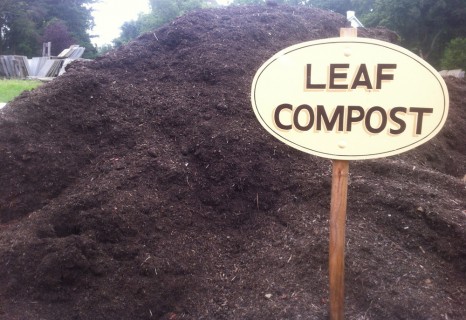
You've been raking, raking, relentlessly raking, and now you're not so sure what to do with all of those bags of leaves piling up in your garage. If you're thinking of sending them to the landfill, Jolly Lane Greenhouse has an alternative, an easy method for making compost, for you to consider. It's a simple procedure using leaf bags to compost that you'll want to follow; one that can tag along in conjunction with fall garden care. The goal: a nice leaf compost that will come in handy during planting next spring. As you get on board with our methods for making compost out of yard debris, your primary tool is a sturdy 30 or 40 gallon plastic yard bag. Any brand will do when using leaf bags to compost; however, "tear proof" will allow you to recycle and reuse the bags for multiple batches of compost.

The basic idea behind plastic bag composting is to fill up the bag with natural backyard waste; leaves, grass clippings, and a bit of moisture, then simply toss around and let nature take its cue.
Collecting
When using leaf bags to compost, there must be a mixture of both leaves and green cut grass in the plastic bag. Without green components in the bag, carbon rich leaves will not have any nitrogen to get the composting process started. If you've gathered up the leaves with a leaf blower, be sure to add a mower bag of grass clippings to your plastic bag. A simpler approach for this compost making method is to mow the leaves with the grass into your attached mower bag. This combination of chopped leaves and grass can be dumped directly into the plastic bag, without having to add any other solid materials.
Mixing
The total ratio for optimal results is two thirds brown (leaves) to one third green (grass). Once the plastic bags have been filled to the top with leaves and grass, pack down the material and pour about a gallon of water on top. Puncture the sides with a knife a few times to allow a bit of air circulation, and then tie the top with twine. Place the bags in an out-of-the-way spot in your yard.
Waiting
During the next couple of months, flip the bags over and upside down at least two or three times per month. This will help to distribute the carbon and nitrogen and speed up the leaf composting process. Go about finishing up any other fall garden care tasks on your to-do list. Once winter arrives and the temperatures drop below freezing, the bags can be left alone until the spring thaw. When you open the bags the following spring, you'll discover around a gallon or more of dark, crumbly compost. If you find that not all of the leaves have broken down, scoop a shovelful of yard dirt into the bag, add a little more water, and give the bag one more flip. Within two weeks, the material will have finished composting. It's now ready to be tilled into the garden beds as a soil amendment and conditioner.

Using leaf bags to compost in the autumn season is a smart and efficient way to plan ahead and fuel your garden in the spring. In addition to the fun that making compost brings, following our method is also an easy way to reduce your carbon footprint and do something nice and friendly for your natural environment.
